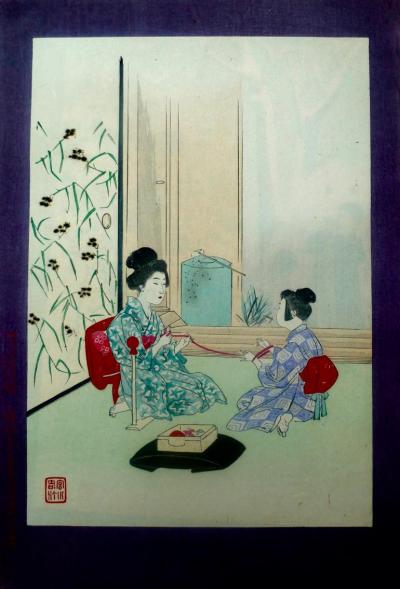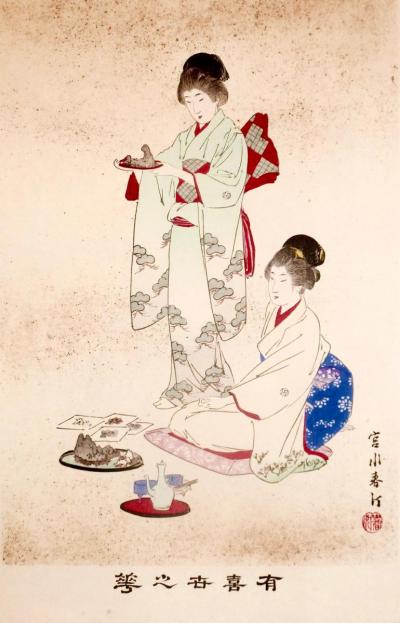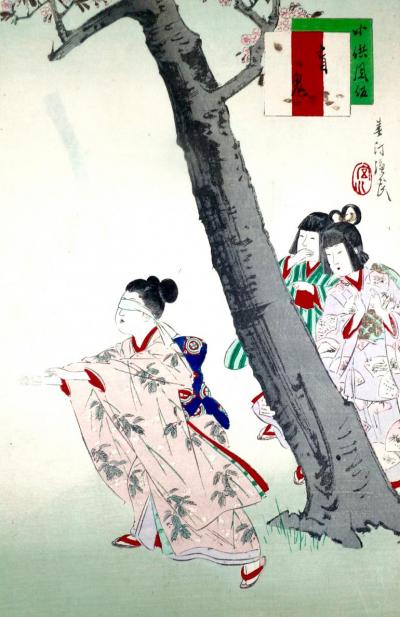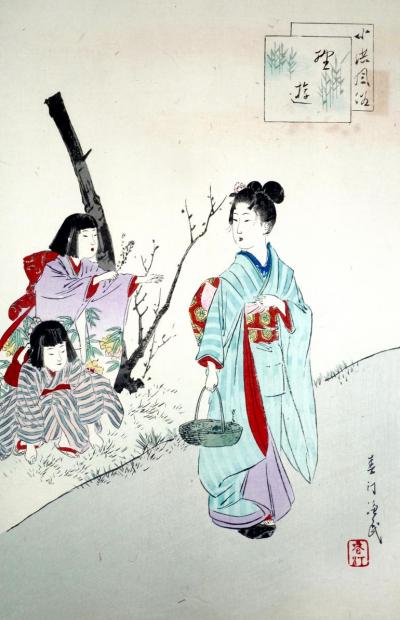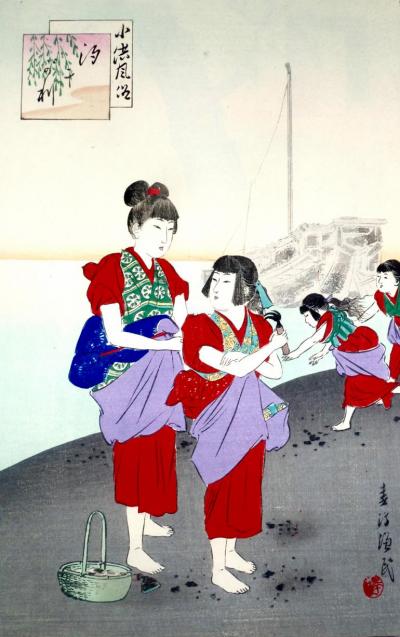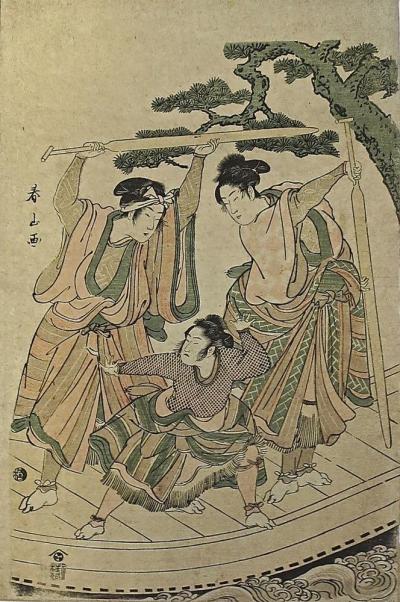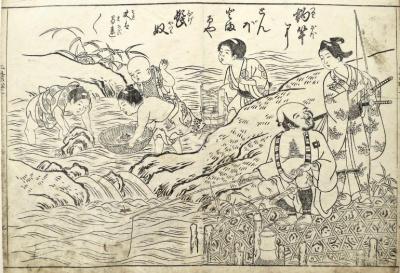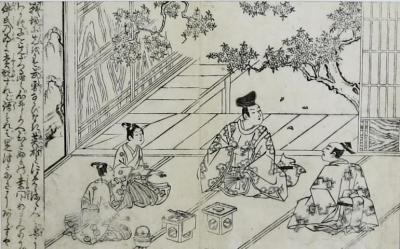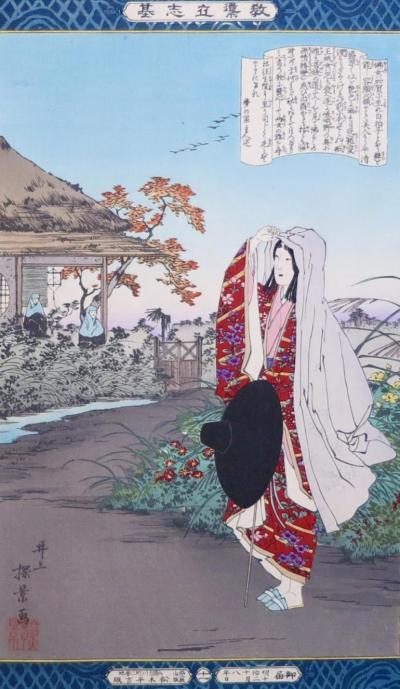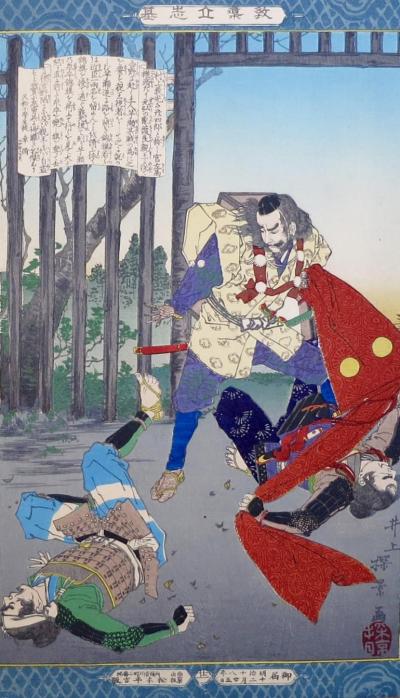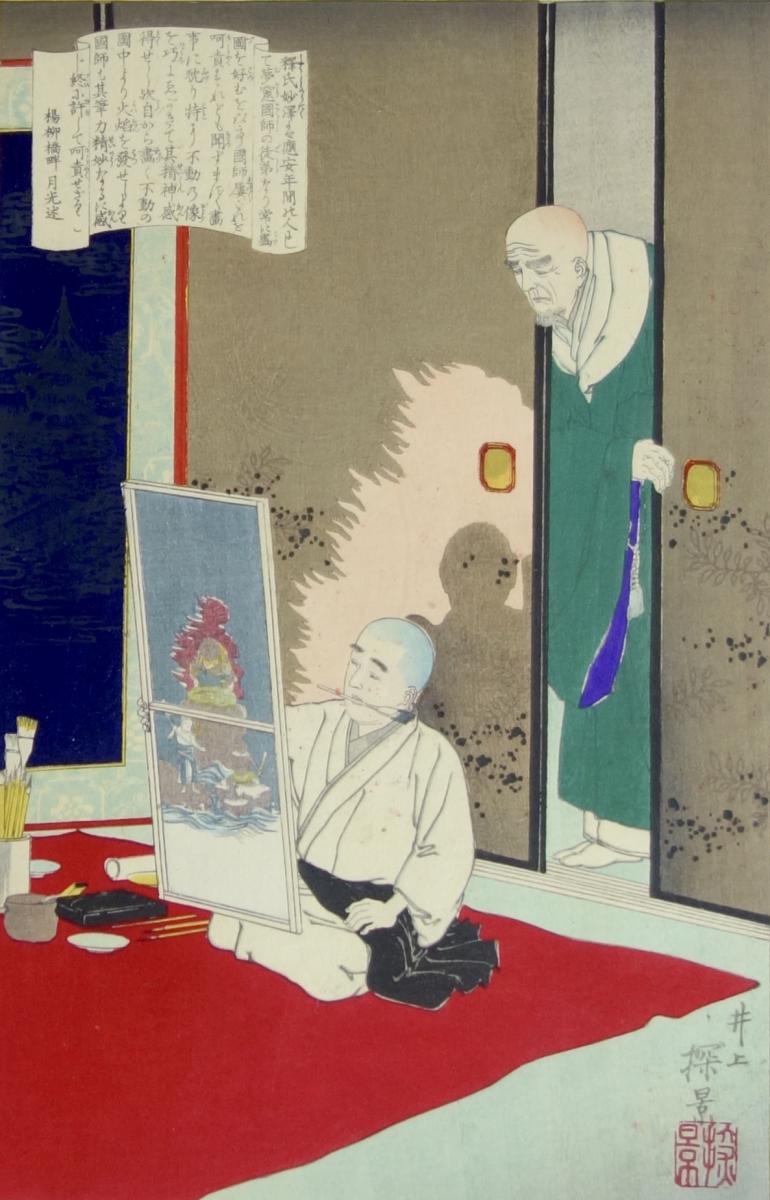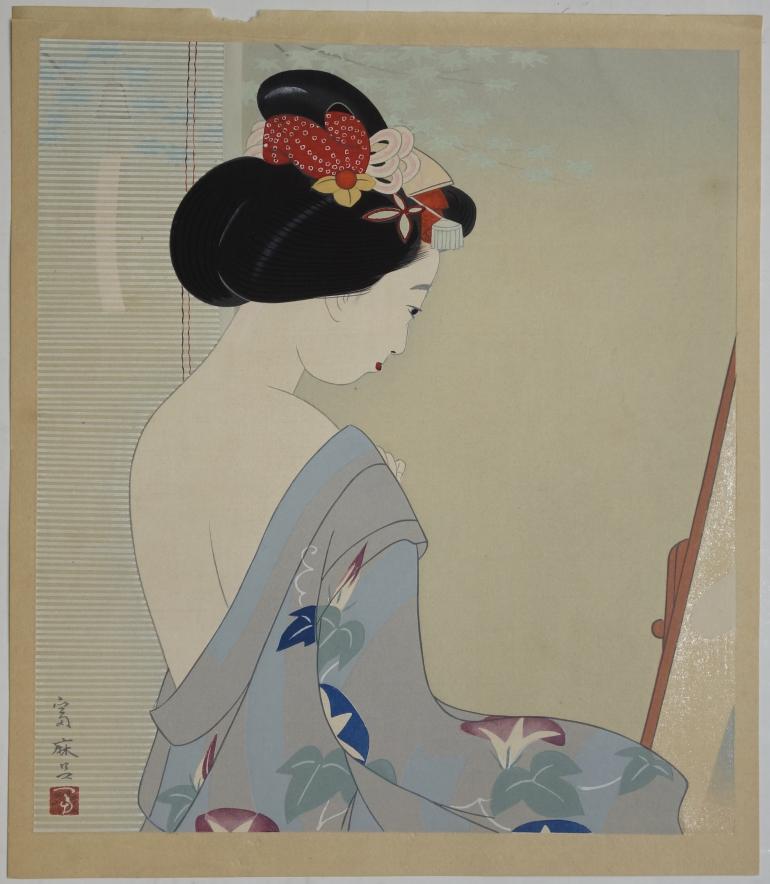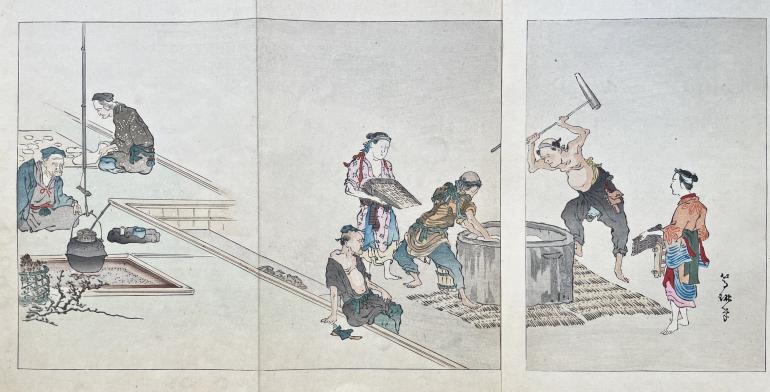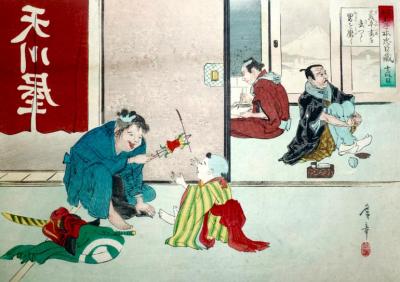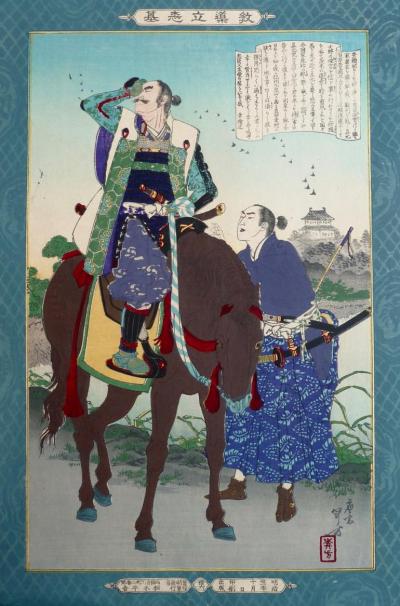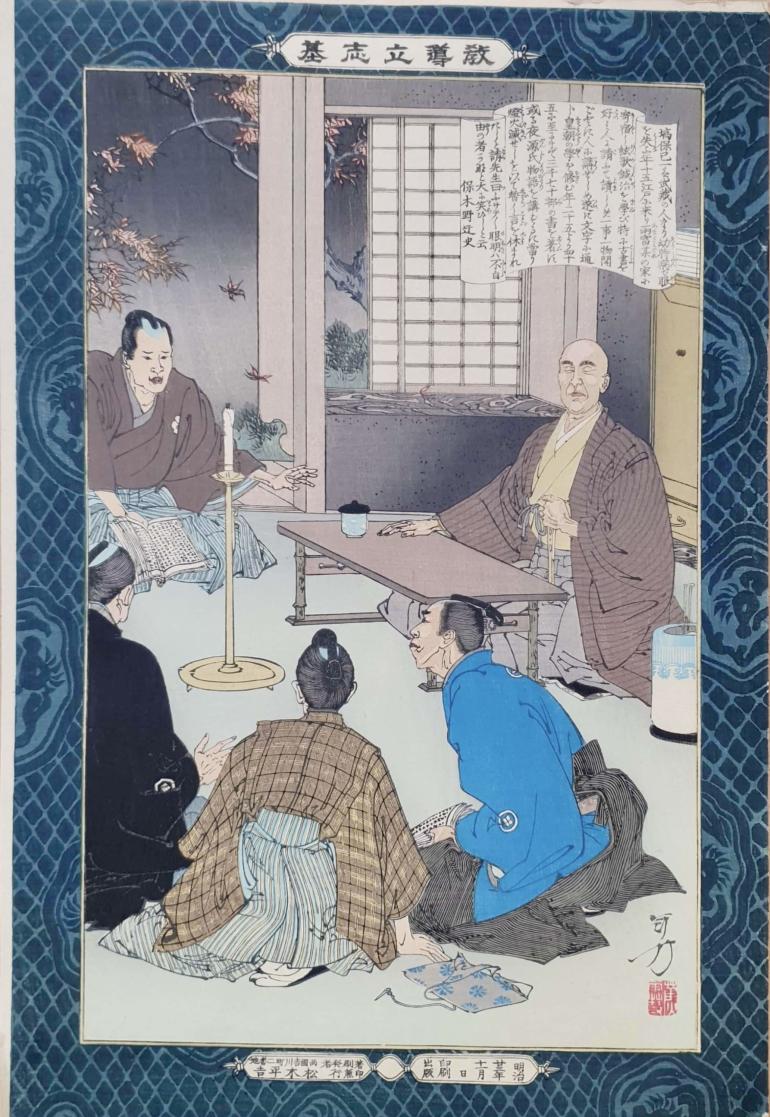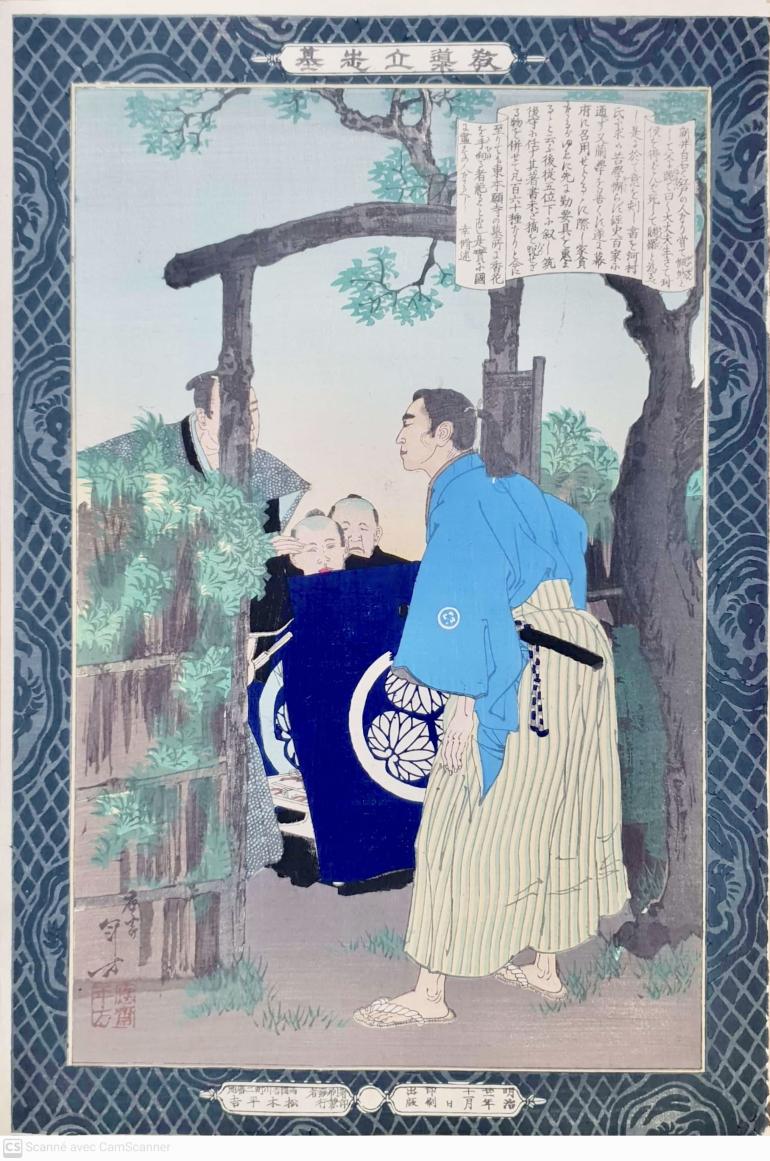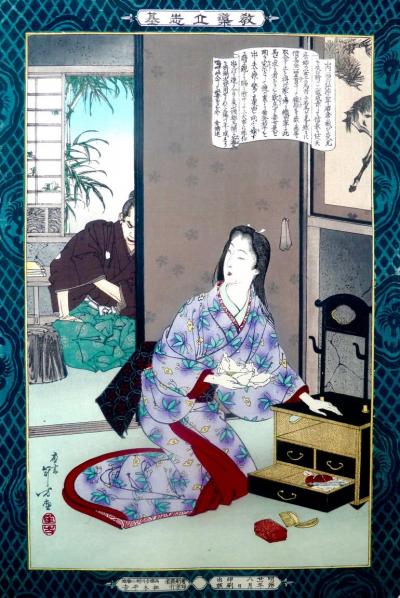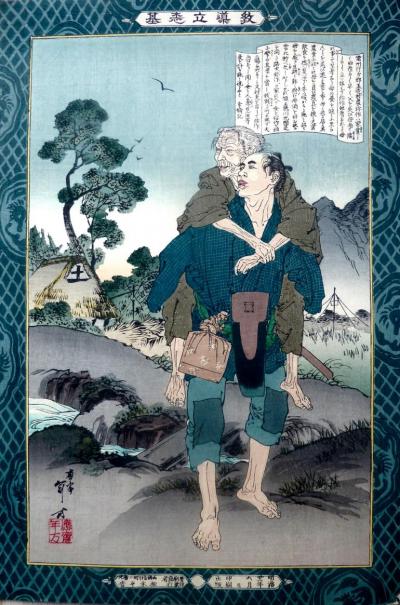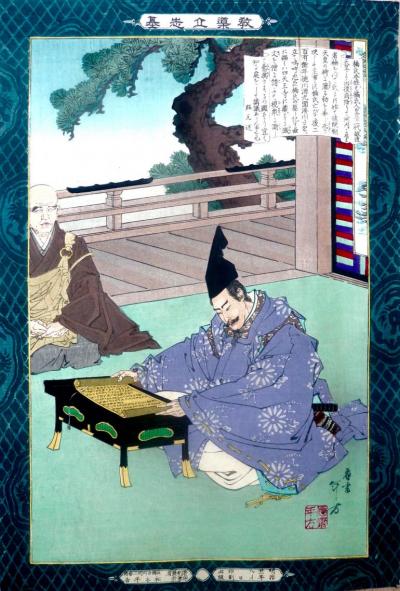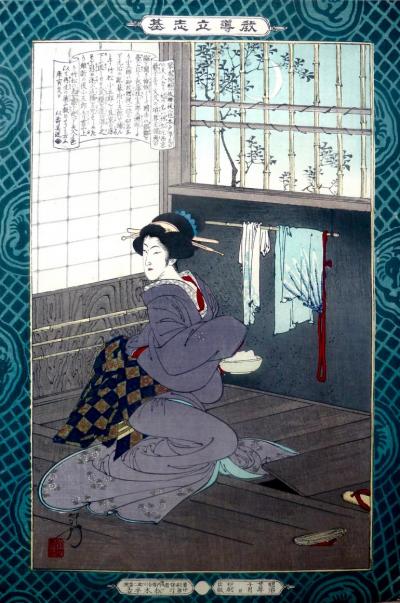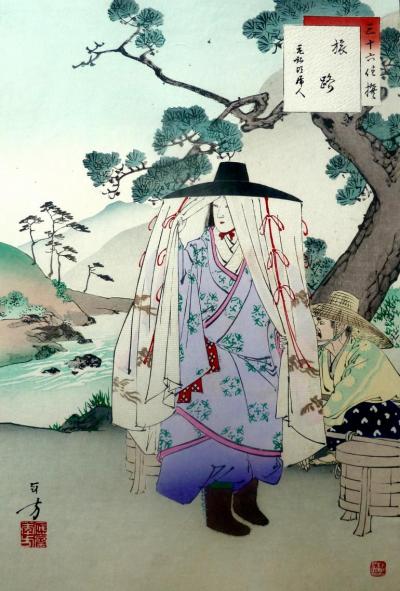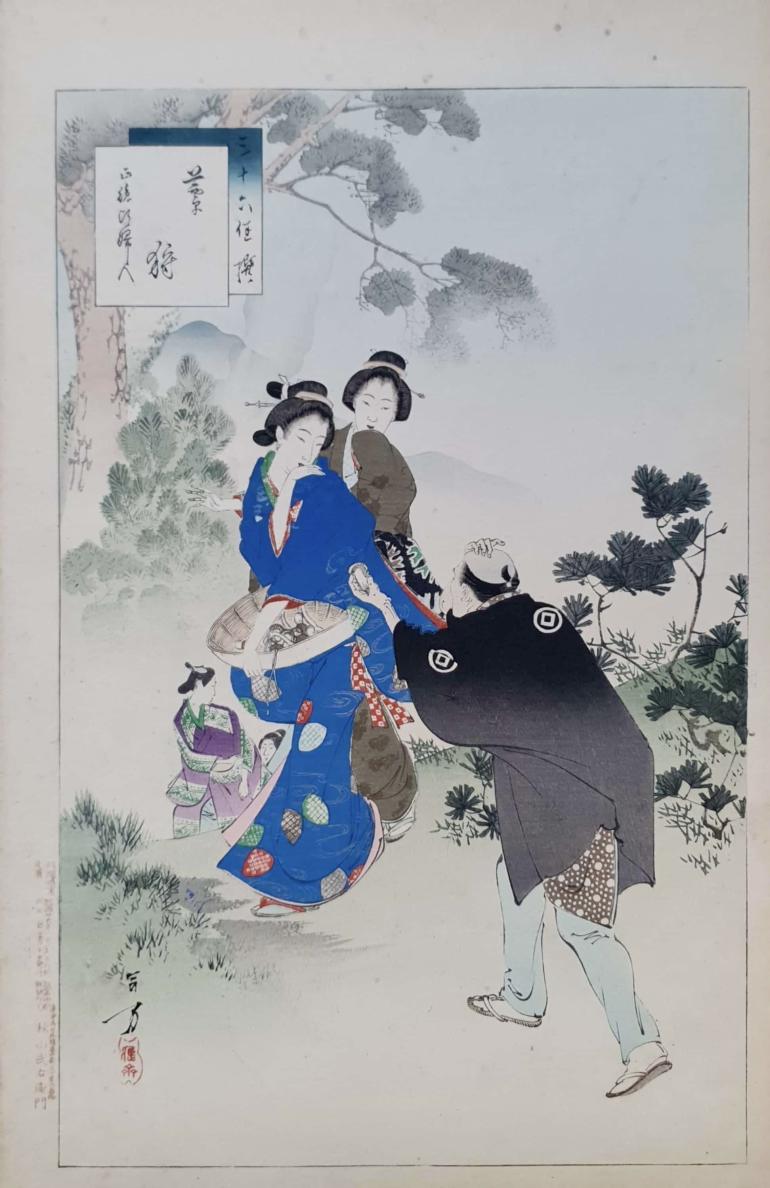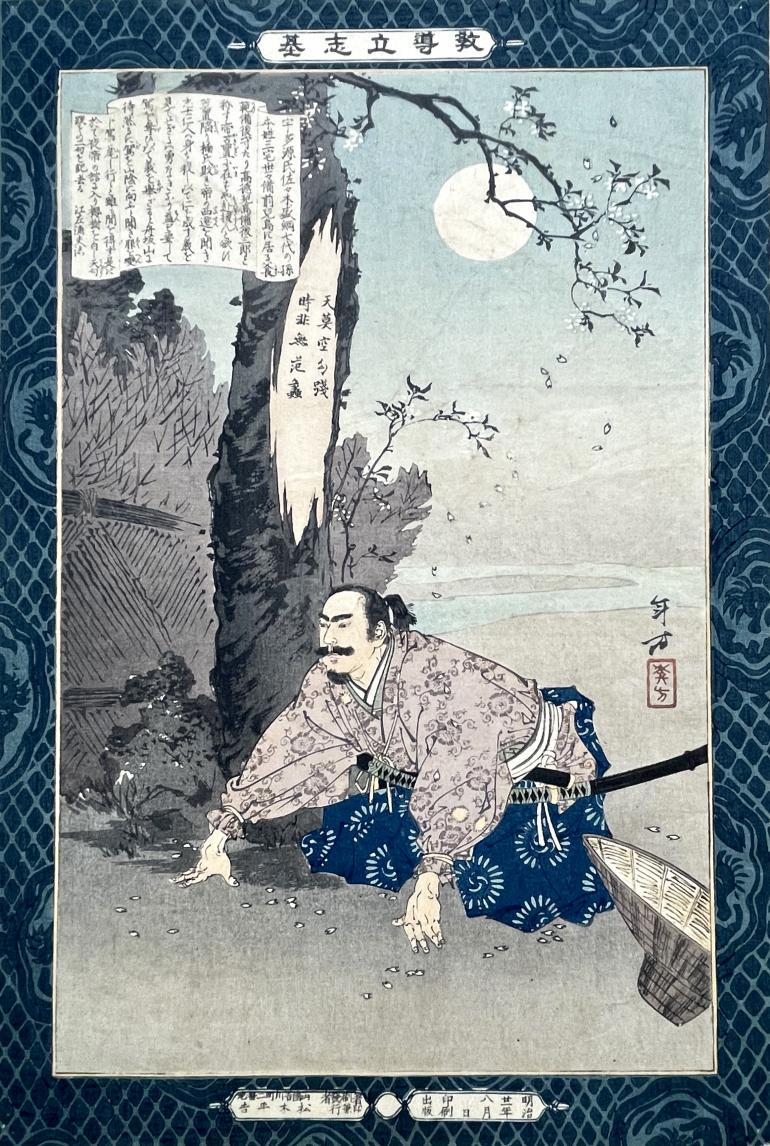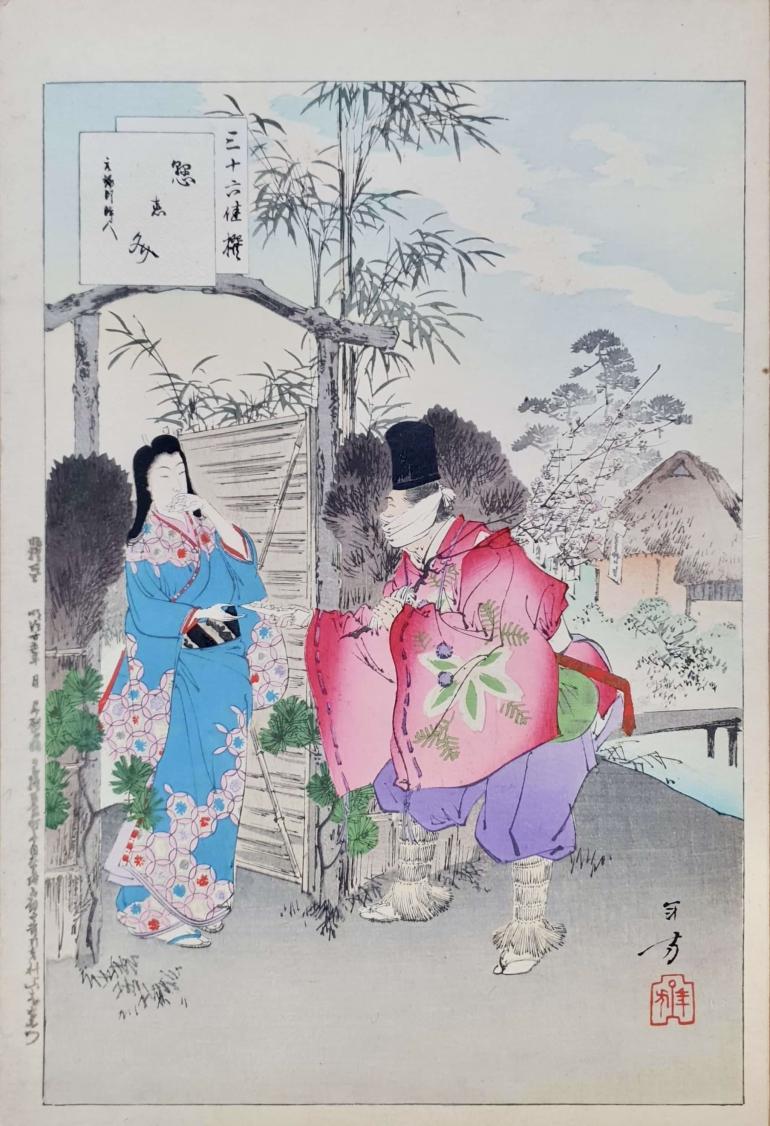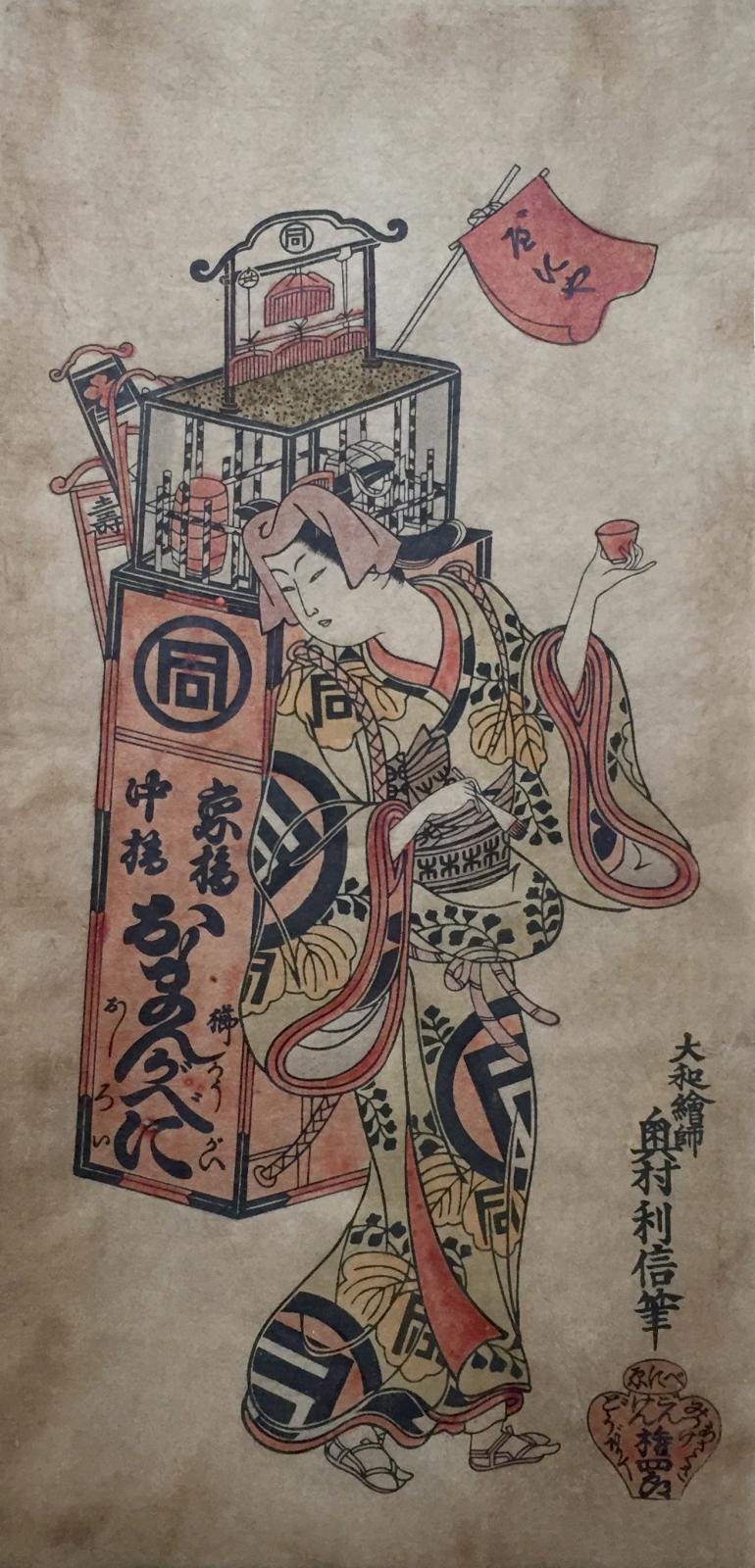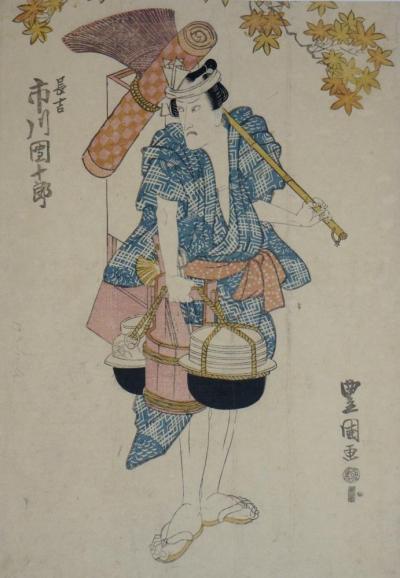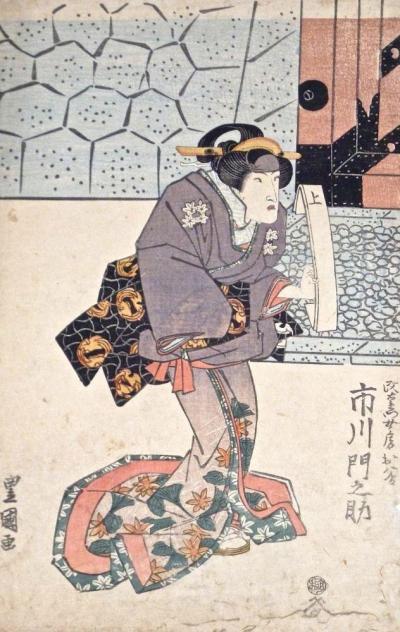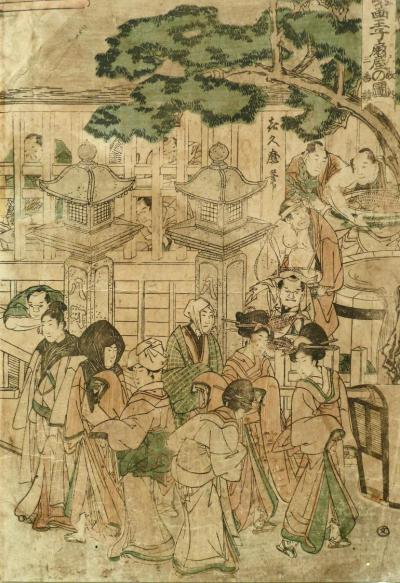Daily life and traditions
412 Résultats
-
SHUNTEÏ Miyagawa
(1873 - 1914)
String Play, Plate from Kodomo Fuzoku
Woodcut in colours
- 180 €
- See the technical
-
SHUNTEÏ Miyagawa
(1873 - 1914)
plate from Flowers of the Floating World (Yukiyo no hana)
Woodcut in colours
- 210 €
- See the technical
-
SHUNTEÏ Miyagawa
(1873 - 1914)
Blind Tag, Plate from Kodomo Fuzoku
Woodcut in colours
- 180 €
- See the technical
-
SHUNTEÏ Miyagawa
(1873 - 1914)
Gathering Herbs, Plate from Kodomo Fuzoku
Woodcut in colours
- 180 €
- See the technical
-
SHUNTEÏ Miyagawa
(1873 - 1914)
Gathering Clams, Plate from Kodomo Fuzoku
Woodcut in colours
- 210 €
- See the technical
-
SHUNTEÏ Miyagawa
(1873 - 1914)
Children's fireworks
Woodcut in colours
- 180 €
- See the technical
-
SHUNZAN
(Active between 1782 and 1798)
TROIS PERSONNAGES SUR UNE BARQUEWoodcut in colours- Sold
- See the technical
-
SUKENOBU Nishikawa
(1671 - 1750)
Fishing scene.
Woodcut from an original album
- 130 €
- See the technical
-
SUKENOBU Nishikawa
(1671 - 1750)
Banquet scene
Original woodcut
- 130 €
- See the technical
-
TANKEÏ Inoue Yasuji
(1864 - 1889)
Hotoke Gozen, series Kyōdō risshi no motoi (Instructive Models of Lofty Ambition)
Woodcut in colours (nishiki-e)
- 230 €
- See the technical
-
TANKEÏ Inoue Yasuji
(1864 - 1889)
Fighting scene, series Kyōdō risshi no motoi (Instructive Models of Lofty Ambition)
Woodcut in colours (nishiki-e)
- 180 €
- See the technical
-
TANKEÏ Inoue Yasuji
(1864 - 1889)
The priest Myotaku appearing from a screen
Woodcut in colours
- 230 €
- See the technical
-
TOMIMARO Higuchi
(1797 - 1861)
[Maiko in front of the mirror]
Woodcut in colours
- Sold
- See the technical
-
TÔRIN III Tsutsumi (after)
(cirac 1743 - 1820)
Man and women kneading flour and cooking
Woodblock print
- 110 €
- See the technical
-
TOSHIAKI Yusai
(1864 - 1921)
Plate from 47 Ronin (Kanadehon Chushingura)
Woodcut in colours
- 180 €
- See the technical
-
TOSHIKATA Mizuno
(1866 - 1908)
Kyodo Risshi no Motoi (Farewells), planche issue de la série Kyodo risshi no motoi (Instruction in the Fundamentals of Success)
Woodcut in colours
- 280 €
- See the technical
-
TOSHIKATA Mizuno
(1866 - 1908)
Hanawa Hokiichi's lesson
Woodcut in colours
- 230 €
- See the technical
-
TOSHIKATA Mizuno
(1866 - 1908)
Tokugawa offering donations to Shinraisaï Arai so that he could continue his studies.
Woodcut in colours
- 230 €
- See the technical
-
TOSHIKATA Mizuno
(1866 - 1908)
The devoted wife of Yamauchi Kazutoyo the first feudal lord of Tosa, plate from Kyodo risshi no motoi (Instruction in the Fundamentals of Success)
Woodcut in colours
- 210 €
- See the technical
-
TOSHIKATA Mizuno
(1866 - 1908)
Yasaku, planche issue de la série Kyodo risshi no motoi (Instruction in the Fundamentals of Success)
Woodcut in colours
- 180 €
- See the technical
-
TOSHIKATA Mizuno
(1866 - 1908)
Kusunoki uji, planche issue de la série Kyodo risshi no motoi (Instruction in the Fundamentals of Success)
Woodcut in colours
- 210 €
- See the technical
-
TOSHIKATA Mizuno
(1866 - 1908)
Geiko Takematsu, planche issue de la série Kyodo risshi no motoi (Instruction in the Fundamentals of Success)
Woodcut in colours
- 210 €
- See the technical
-
TOSHIKATA Mizuno
(1866 - 1908)
On the Road: Woman of the Genkô Era [1331-34] (Tabiji, Genkô koro fujin), planche issue from the series Thirty-six Elegant Selections (Sanjûroku kasen)
Woodcut in colours
- 180 €
- See the technical
-
TOSHIKATA Mizuno
(1866 - 1908)
Gathering Mushrooms: Women of the Shôtoku Era
Woodblock print
- 180 €
- See the technical
-
TOSHIKATA Mizuno
(1866 - 1908)
The warrior Kojima Takanori kneeling beside the cherry tree on which he has written a cryptic poem for the captive Emperor Go-Daigo
Woodblock print
- 250 €
- See the technical
-
TOSHIKATA Mizuno
(1866 - 1908)
The Love Letter: Women of the Genroku Era
Woodblock print
- 210 €
- See the technical
-
TOSHINOBU Okumura
(Active between 1717 - 1750)
Oman, a peddler selling cosmetics
Woodblock print
- 1300 €
- See the technical
-
TOYOKUNI II Utagawa
(1777 - 1835)
Man with a broom
Woodcut in colours
- 280 €
- See the technical
-
TOYOKUNI Utagawa
(1769 - 1825)
Woman in kimono with flowers
Woodcut in colours
- 210 €
- See the technical
-
TSUKIMARO Kitagawa
(active ca 1794 - 1850)
Teahouse Ogiya at Oji
woodcut in colours
- 380 €
- See the technical
